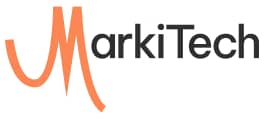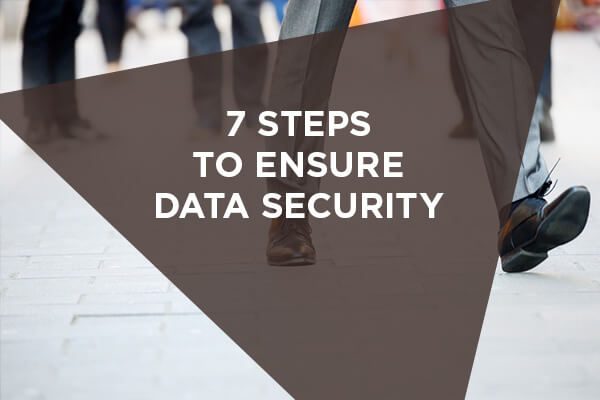Table of Contents
ToggleThis blog post and its associated images have been reproduced with the explicit permission of TkXel , MarkiTech’s technology partner.
Written by,
Shazia Anwar,
Content Strategist, TkXel
Internet of things is transforming the technology market and the way businesses operate. To begin with, IoT is the transformation of mere objects into receivers and transmitters of information. By simply embedding objects with sensors and relevant software, they can be converted into smart devices.
With the help of IoT, companies will be able to gather valuable data from numerous devices. This will help in making smart business decisions by timely usage of data collected by those devices. Not only this, IoT helps in controlling these devices with the help of existing IT infrastructure of a company.
Simply put, IoT leads to the integration of physical world with technology. It helps in improving efficiency and uplifts economic structure of a company. Though there are several benefits of IoT for businesses, it has increased concerns for companies regarding data security.
Data security is at the heart of a company’s business strategy. Effective security measures not only help in data security but also lead to business efficiency. Before the advent of IoT and other technological advancements, security measures at companies were different. However, it is important for companies to upgrade their security systems in accordance with the changes in the tech environment.
For a successful enterprise strategy , it is necessary to revamp security structure of the company. To remain successful, it is necessary to evolve and revamp. Otherwise, companies lose their competitive edge and are replaced by the ones running at the pace of technological changes.
IoT and the Challenges for Enterprise
With IoT comes a storm of data. It is true that not all of the data collected is valuable for an organization but losing it to competitors or outsiders can be destructive. The biggest issue is of losing confidential customer data including customer behavior pattern which is extremely important for an enterprise.
Nick Howell, a technology enthusiast working at Cohesity, stated.
“From a data protection perspective specifically, the more data you have, backup windows and second tertiary storage requirements, processes tend to grow exponentially. You get the hockey stick effect, and the continued sprawl of silos intended to handle this individually just can’t be tolerated. New approaches have to be taken with the sheer amount of data.”
Hence, enterprises need to deal with the challenges while benefiting from its uses. Mentioned below are the ways in which companies can deal with data security issues arising from the use of IoT for businesses.
1. Strategy development
Most of the time, businesses try to incorporate the latest tech trends into their strategy without analyzing the subsequent uses for the business. What is good for one company is not necessarily going to be fruitful for another company. Industry needs are different as well, which is often neglected.
However, a successful strategy is the one where a business needs to understand the use of a technological advancement for meeting the business goals. This leads to developing appropriate strategies for bringing on board the relevant technological change.
Similarly, when companies plan to use IoT for their businesses they should develop an appropriate data protection strategy. Companies that spend time in developing corporate data handling principles remain successful in the long run.
Ensuring safety of data must be the top priority for a business. By devising rules and principles, a company makes sure that the employees handle data carefully and must not tamper it. Furthermore, IoT requires the use of cloud computing to store massive amount of data. These principles will ensure that the subsequent cloud network operator is aware of maintaining confidentiality for the company’s data.
2. Risk Assessment
Before implementing any strategy, it is important to assess the risks that come with it. In short, risk assessment must be done prior to the implementation of a strategy. The aim of businesses is to increase revenue while keeping risks low.
Marc Blackmer of Industry Solutions stated:
“I think it all comes down to starting with a risk assessment and risk analysis. I think that’s the first piece of advice if I was sitting down with someone,”
Risk assessment can be done with the help of a data flow chart depicting all the sources of data collection, data storage and the end users of data. This way, loopholes at all stages can be identified and appropriate action regarding security can be taken.
3. Employee influence on data handling
The next step to ensure data security is to make sure that the influence of employees on the data collected is minimal. When data is collected and handed over to employees, it must be ensured that it is handled with care by them.
Practices such as password sharing among the employees can result in compromising the security of confidential data. Hence, companies should rule out clear policies to discourage such practices and ensure data protection.
4. Understand IT procurement
When deciding to make use of IoT for business, it is necessary to evaluate the technology standard of your company. With the adoption of BYOD policies by companies, it is important to spread the IT policies of the organization across all the networked devices.
Using data collected with the help of IoT on personal computer or device can result in use of data for personal use as well if there is no policy in place. For data protection, IT procurement policies should cover all the devices in use for company’s work.
5. Secure end goals
When bringing onboard a technological change, it is best to focus on the end goals and understand the importance of the about-to-be adopted technology for business. Focusing on the endpoints helps in making an appropriate strategy which can be used to devise data security plan.
Additionally, data is useful for a company when it is timely used. Every piece of information has a lifecycle and after some time, it becomes worthless. Losing confidential data collected with the help of IoT when it is of crucial value for your company can be devastating for your end goals. Therefore, data security, end goals, and information life cycle should be considered when implementing the IoT strategy.
6. Merge all silos
Data collected by smart devices is massive and needs various storage spaces. Companies resort to storing data on various platforms such as cloud and onsite which makes it difficult for them to analyze it properly. Managing security of all the platforms is also difficult.
Companies need to merge all platforms to prevent data loss and to use it in accordance with the data age and location of collection. Integration of platforms also results in cost saving and better data protection.
7. Deal with data encryption
Using smart devices can be tricky. You cannot put a sensor anywhere you want and collect data. The first step in data collection is to understand the importance of collecting data from a particular place. Allowing any smart device to send you data is not a smart decision.
Additionally, data collected from various sources can require decoding. Understanding what you need and separating it from what you don’t is a troublesome task. Hence, trusting any source of information is not ideal for data security and must be avoided.
In short, data security is an issue that will continue to hover over organizations and will be magnified by IoT. However, data security can be dealt with and the seven steps mentioned above can lower the risk of data loss significantly.



Recent Comments